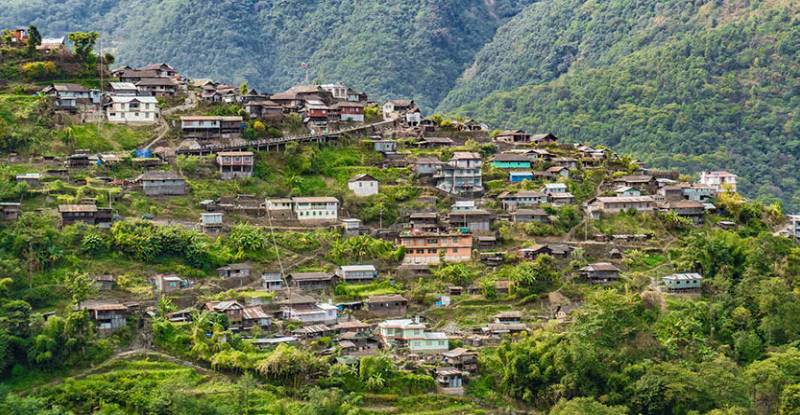Khonoma village, Nagaland
- Description
Khonoma village, situated 20 kilometers away from the bustling streets of Nagaland's state capital, offers a picturesque view of paddy fields and forested hills. Often referred to as a 'warrior village,' Khonoma is renowned for its steadfast resistance during the era of British colonial rule, making it a repository of historical significance.
In addition to its historical importance, Khonoma is celebrated for its contributions to wildlife conservation. In 1998, the Khonoma Nature Conservation and Tragopan Sanctuary (KNCTS) was established to safeguard the endangered Blyth's Tragopan and other rare wildlife and plant species in their natural habitat. Over the past two decades, bird enthusiasts from all over the world have flocked to Khonoma to immerse themselves in the melodies of the avian residents and observe their vibrant plumage.
- Khonoma: The First Green Village in Asia
Notably, Khonoma holds the distinction of being the first Green Village in Asia. Its abundant natural resources, intriguing history, and rich cultural heritage have made it a prime tourist destination in Nagaland. This centuries-old village provides an excellent opportunity for visitors to acquaint themselves with the Naga way of life and find solace in the lap of nature. Exploring Khonoma allows tourists to engage with the local Angami tribe and gain insights into their successful efforts to establish a sustainable and environmentally conscious ecosystem. For an authentic experience, tourists can opt to stay overnight in traditional homestays managed by the local residents. The village also prides itself on its cleanliness, thanks to the presence of dustbins and public toilets.
Tourists can further enhance their visit by indulging in birdwatching and trekking activities. Situated on the outskirts of the city, Khonoma has earned acclaim for its achievements in preserving rare and endangered animal and plant species, along with the practice of terrace cultivation on the hill slopes.




